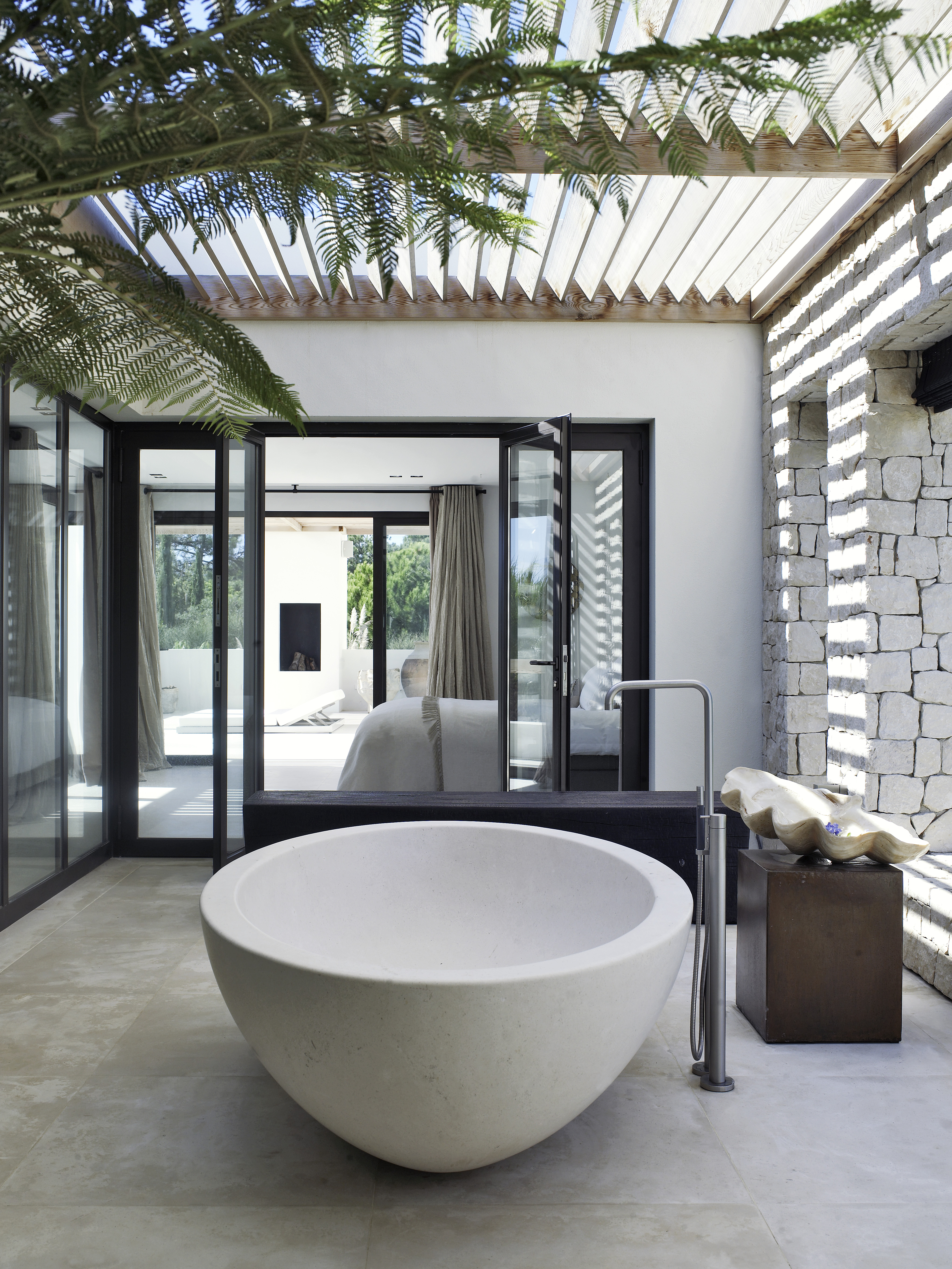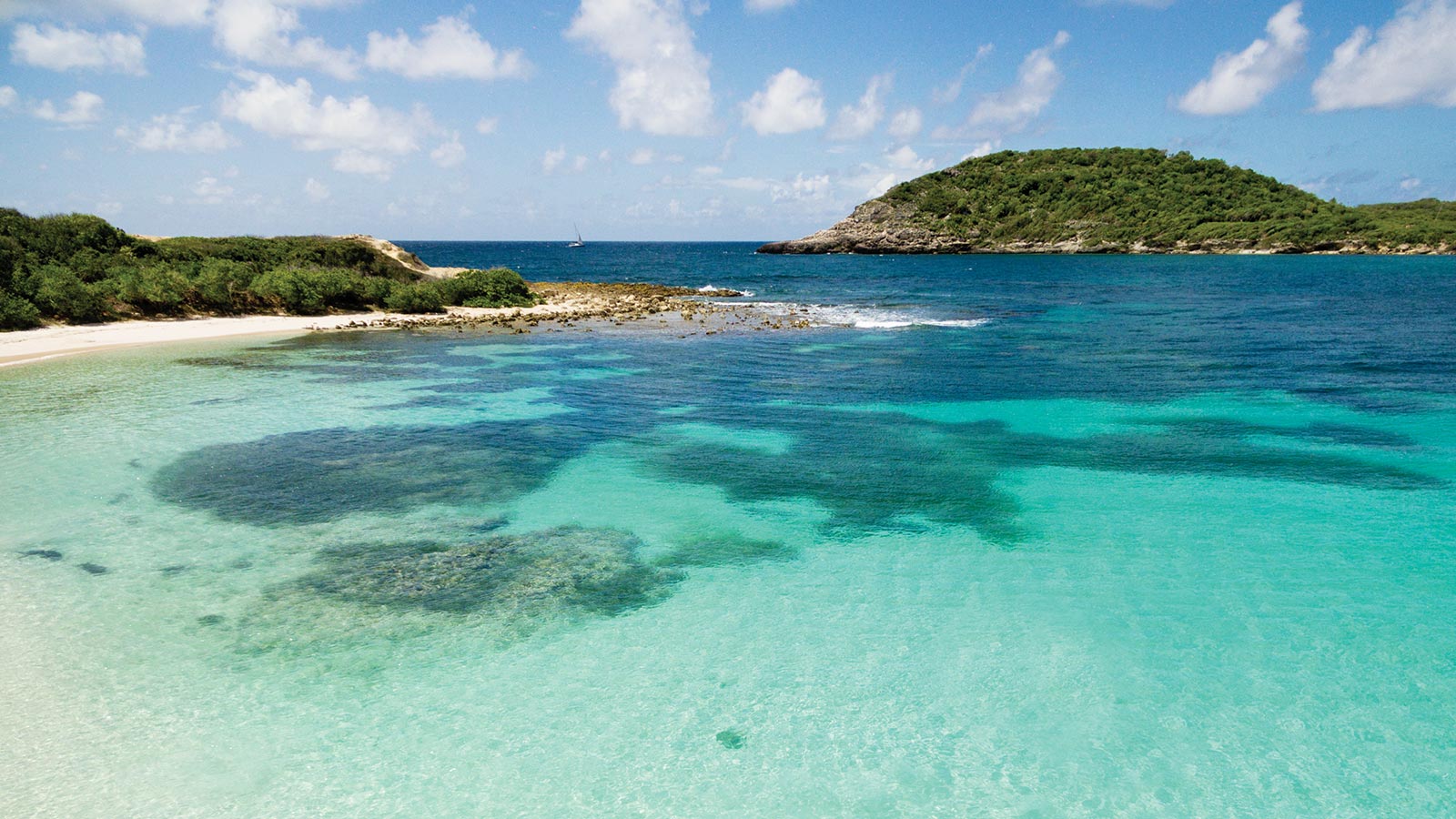Shortly after John F. Kennedy was assassinated, a grieving Jackie Onassis took refuge with her children on the South-East coast of Antigua. Staying at the waterfront estate of Bunny Mellon – the reclusive philanthropist and horticulturalist – Jackie had turned to a place of sublime natural beauty, armed with a paperback edition of Edith Hamilton’s The Greek Way. The 132-acre slice of paradise that stretched out in front of her, named Half Moon Bay, has remained unchanged for the past half century – until now. Dense with rich rolling hills, the 3,200 foot crescent coast line has recently been acquired by developer Replay Destinations. Together with the hotelier Rosewood it is creating a resort with some of the most exclusive land parcels in the entire world, and in the words of Half Moon Bay Antigua CEO William Anderson: “coming into the market and reimagining – or resetting – the paradigm”.
Paying homage to the original Half Moon Bay Hotel built in the 1950s and frequented by international socialites, the ambitious work is being headed up by landscapers VITA, architects OBMI and internationally renowned design studio Piet Boon. Pioneering biodynamic methods of harvesting, planting and conservation, the resort aims to leave as little a mark upon the landscape as possible, effortlessly blending into the lush topography. Port spoke to William and Piet about the project; covering the evolving concept of luxury, setting new standards in sustainability and how social media has changed the hospitality sector forever.

Why is this such a unique project?
William Anderson (WA): It’s a bit of a cliché to say the photos don’t do it justice, but the sheer scale of it is incredible. Just the physicality of the elevated typography is stunning, there’s not a single spot that doesn’t have a view taking in that entire half mile beach. 180 degrees out toward the sea on an 80-foot cliff – it’s like mini Big Sur. The exclusivity is also important, we have ten lots, five that are spoken for. Knowing the Caribbean, I couldn’t have found anything on a spectacular natural beach of that magnitude. Lastly, lots of people can design beautiful hotels but the intangible really comes into play with programming. The expanded, multigenerational demographic that we see today, who are all visiting at the same time, have very specific and varied needs. We wanted to offer that new group the unexpected in terms of really interesting programming.
What does ‘luxury’ mean in 2019?
Piet Boon (PB): Luxury for me has always been about comfort and space. The latter being something that is becoming more and more scarce in this day and age. I think time has become a luxury too. In that sense we used time as a major theme for Half Moon Bay. With our designs we want people to truly experience comfort, space and make the most of their time. We design for effortless living that caters to those needs.
WA: I don’t know if it can be defined as a singular word, as opposed to more the notion of a curated lifestyle. It’s been somewhat bastardized at this point. People are so busy today, and we have some buyers who are much younger than you would have seen 20 years ago. I don’t think they generally have time to consider all the products they’re being bombarded with, so it’s our job to understand what it is they’re looking for and deliver to that expectation. You breakthrough by being able to articulate the experiential aspect of what makes this different.
Years ago I had oversight of this wonderful hotel in Jamaica on the south coast called Jakes, at the time it was the coolest hundred dollar night hotel you’ve ever seen. People would ask, ‘what should I do when I’m there?’. We always gave the same answer – take off your shoes. That is one of the true luxury experiences, to my mind, that connects you to when you get home in the evening. That connection really resonates, so for busy people, luxury can be something as simple as taking your shoes off. It can mean a beautiful glass of wine, time with my kids – I believe that authenticity is luxury. My wife is still mad I didn’t trademark that.

What materials and palettes will you be using?
PB: We’ll be using neutral and timeless palettes to blend in with the surrounding environment as much as possible, but will also inject colours that reflect the vibrant personality of the Caribbean. We’ll also use rich natural materials that age well and aim to use as much locally sourced materials as possible. For example, Antigua is home to a natural stone that we aim to use, which colours a beautiful green hue because of the copper it contains.
What impact has moving away from material goods to a more experiential form of wealth had on the hospitality sector?
WA: Everyone is social media savvy these days and I was always sceptical about social media in this sector – how wrong I was. I was stubborn because I didn’t feel like people at that level were checking their Instagram feed. Now we’re designing hotels knowing where the Instagram shot will be. The design team twisted the arrival area just a few degrees because now when you arrive, it’s really the first time you see the full expanse of Half Moon Bay, looking right over at the far point where the waves are crashing in and creating this huge spray.
How have you balanced traditional Caribbean architecture with a more modern aesthetic?
PB: We managed to balance this by staying close to the island’s familiar architecture, but executing it with modern materials to create a traditional yet contemporary experience. The whole idea is to create a place that is completely new, but feels as if it has always been there and fits perfectly with its surroundings – as if it came up from the ground. Nature is a prominent feature – just like the typical typology of the island, the rooftops at Half Moon Bay are kept below the treetops, allowing the units to blend in from all angles.

How has sustainability been worked into the build?
PB: Together with OBMI, we’ve made sure that all units are designed to benefit from the sun as well as the wind. The design allows for a lot of natural shading, so that – if you wish – you don’t have to rely on artificial cooling. In addition to rainwater collection, the resort will also boast a nursery with indigenous plants.
WA: We have a deep obligation to leave a limited footprint on the area and are one of the first resorts in the world to impart a biodynamic ethos over the project. The Caribbean is very prone to drought and could be incredibly impacted by climate change, so the retention of water is key. In the tropical world the rains tend to be monsoonal, so the ability to capture all that water would be wonderful. The basis of our biodynamics is the ability to create a nutrition rich, water retentive humus, so we started composting six months ago. A 1% increase of humus into the soil will result in the retention of an additional thirty five to fifty five thousand gallons of water per acre per year. It’s all very well to use solar, but how can we go deeper in this pristine part of the world, working on coral restoration, for example? For me, that’s what’s exciting.
Any colourful stories from the local area?
WA: Bunny Mellon was this incredible socialite who designed the Rose Garden at the White House, she had her home here and owned the peninsula where we have the Rosewood estate and a few guestrooms. On a biography written about her last year, sure enough there she was on the cover, sitting on her terrace with the peninsula in the back. She was incredible and the people that came to that home included Mrs. Kennedy and the children. There was even an old tree house that Bunny had built for little John Kennedy.
When I was looking after Jumby Bay many years ago, I remember we got a call from Princess Diana who wanted to come with the boys. It was right around the time that she was splitting up, around Christmas, and there was just 24-7 coverage. I felt that it was going to be so disruptive to the rest of our guests that it really wasn’t worth that risk. I didn’t want to turn her down, but I had to. So of course she went to the K Club in Barbuda, our sister island, and there was literally paparazzi in mini-submarines and helicopters. It was a nightmare, but it was the right call. As a hotelier you get to meet some extraordinary people and have a lot of good stories, but you’d have to ply me with two or three bottles of very good wine to get some of those out!